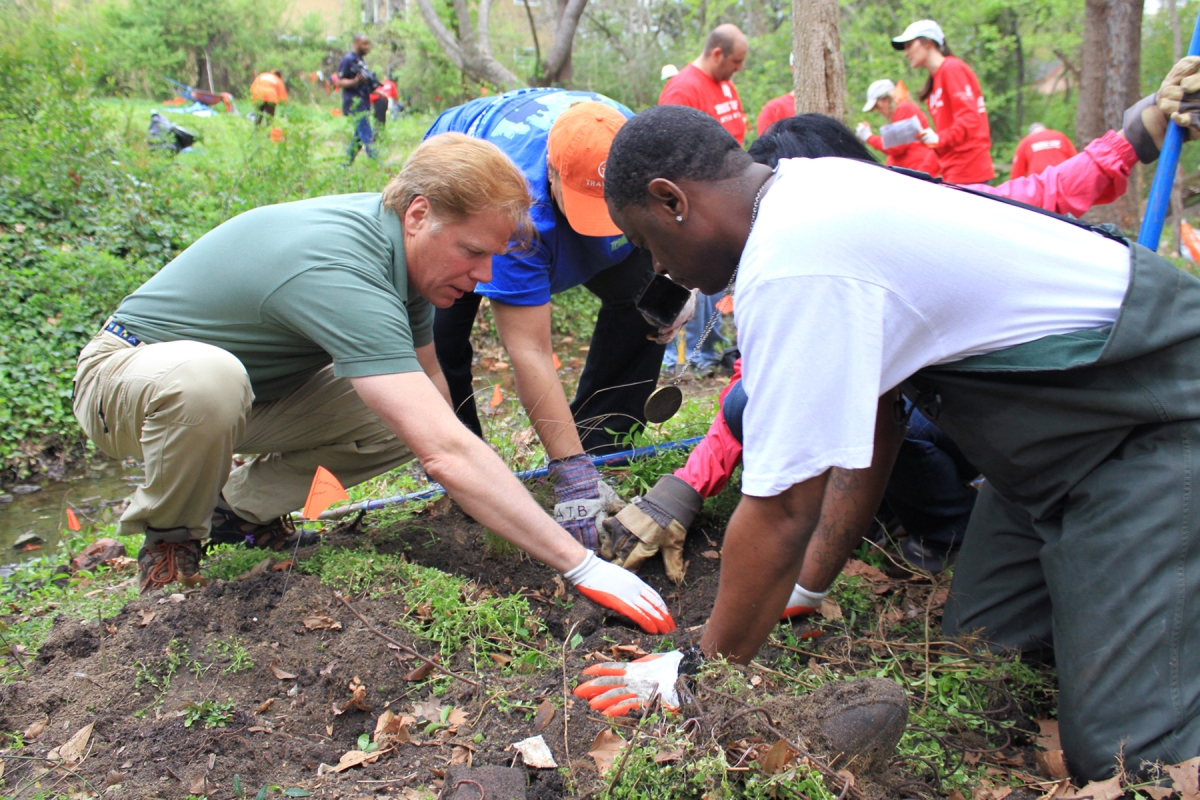
By Larry Selzer, President and CEO, The Conservation Fund
Any ambitious movement for major transformation starts with courageous, far-sighted visionaries. But to fully succeed – to tip fundamental change into the mainstream – every consequential movement requires massive participation and broad commitment that is propelled by hearts and minds.
America’s conservation movement – well over a century old – has certainly had its share of successes. Our national parks and protected lands are a model for the world. And yet – after generations of significant accomplishments – we still struggle. Our national dialogue actually continues to argue over the false choice of the environment versus the economy. This may work as a convenient political canard, but it’s increasingly clear that economic vitality and environmental protection are mutually reinforcing.
Many in the private sector grasp this. The business community has embraced the urgency of conserving natural resources, addressing climate change and maintaining an upward economic trajectory. They are leading at a time when many in the political arena have abandoned the stage.
The environmental movement, by not factoring economic benefit as an integral part of solutions, is leaving too many people on the sidelines. In our age of vast economic disparity, we should be focusing on solutions that produce conservation and economic benefits.
A former board chair of The Conservation Fund, Charles Jordan, once noted, “Conservation is an all hands on deck proposition.” Eloquently put, and absolutely true.
In fact, there are many Americans who are practicing what we know as conservation in their daily lives, but do not consider themselves part of the environmental movement. They instinctively know that smart practices in agriculture, ranching, hunting and aquaculture can protect robust ecosystems, ample natural resources, clean air and water – all essential for our country’s future.
Our experiences at The Conservation Fund show many more people how they too can participate in conservation. Some examples:
- As we protect large-scale working forests, one of the most urgent and overlooked environmental challenges of our time, we secure and generate jobs in the communities that depend upon them. Our Working Forest Fund, supported by Apple, Disney, UPS and others, protects these forests and keeps forestry and dependent jobs in communities across the country.
- In Michigan’s Saginaw Bay watershed, The Dow Chemical Company and many foundation and community partners have spurred an 18-year investment in critical projects across the region that promote sustainability and conservation. Addressing pollution prevention, agriculture and food systems, wildlife stewardship, water resources, land use and more, supported projects impact more than 1.4 million people. The focus of these initiatives result in an improved quality of life and a stronger economy.
- Many budding entrepreneurs understand the connection between using natural resources responsibly and creating profitable businesses. Our Natural Capital Investment Fund supports locally-owned enterprises in Central Appalachia and the Southeast, creating lasting jobs and community wealth, always using natural resources responsibly. Over 2,700 jobs have been created or retained by over 150 businesses since 2001.
- In North Carolina, thousands of Americans in rural and economically distressed communities have banded together to grow fresh food and benefit financially from their sustainable agricultural practices. Our Resourceful Communities program generates thousands of jobs and a $12 to $1 return on investment. Most importantly, conservation is regarded as a logical answer to many related community challenges.
- We create urban parks in underserved communities to address multiple challenges. In Atlanta, U-Haul joined dozens of partners with major financial contributions to give back to the environment and strengthen the city’s green economy. The result: workforce training and jobs, educational opportunities, a creek that no longer spills sewage into nearby streets, safer places to play and a park with true purpose as the center of community life.
We have found that leading with both economic and environmental benefits spurs people to do even more to promote economic progress, stimulate job creation, support thriving wildlife, advance public health improvements including food and nutritional security, enhance recreation opportunities, and of course offer inspiration.
We must engage far more Americans in conservation, and we can do so when we take market-based approaches with clear benefits for people and communities. After all, our nation’s economic resilience has always been directly linked to the abundance of our environmental resources.
Let’s mobilize every American to transform the conservation movement and get the job done.
____________

Larry Selzer, President and CEO, The Conservation Fund
Appointed in 2001, Larry leads an executive team that charts the organization’s strategy and equips the staff to succeed. Under Larry’s leadership, The Conservation Fund has brought an entrepreneurial spirit to conservation, launching efforts to design and implement mitigation solutions, seed small green business, manage working forests and above all, better integrate economic and environmental goals.
Prior to joining The Conservation Fund, Larry started his professional career at the Manomet Center for Conservation Science, conducting research on marine mammal and seabird populations. He serves on the boards of the American Bird Conservancy, The Outdoor Foundation and the Sustainable Forestry Initiative.
